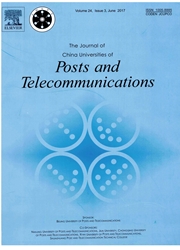

 中文摘要:
中文摘要:
用合作社的无线传感器网络(WSN ) 多重输入多重产量(MIMO ) 通讯是有效工具在几环境收集数据。然而,怎么在 WSN 遗体使用合作 MIMO 批评挑战,特别在稀少的 WSN。在这篇文章,一个新奇聚类计划被扩大传统的低精力的适应聚类层次在稀少的 WSN 为合作 MIMO 的申请建议(沥滤) 协议。这个聚类的计划解决簇头(CH ) 不能发现簇头(SCH ) 足够第二等的问题,它被用来合作并且与 CH 通知多重天线的传输器。根据这个协议,网络模型的全面精力消费被开发,并且 CH 的最佳的数字被获得。模拟结果证明这个协议为稀少的 WSN 是可行的。模拟结果也说明那这个协议提供重要精力效率,甚至在允许以后另外的开销。
 英文摘要:
英文摘要:
Wireless sensor networks (WSN) using cooperative multiple-input multiple-output (MIMO) communication are effective tools to collect data in several environments. However, how to apply cooperative MIMO in WSN remains a critical challenge, especially in sparse WSN. In this article, a novel clustering scheme is proposed for the application of cooperative MIMO in sparse WSN by extending the traditional low-energy adaptive clustering hierarchy (LEACH) protocol. This clustering scheme solves the problem that the cluster heads (CH) cannot find enough secondary cluster heads (SCH), which are used to cooperate and inform multiple-antenna transmitters with CHs. On the basis of this protocol, the overall energy consumption of the networks model is developed, and the optimal number of CHs is obtained. The simulation results show that this protocol is feasible for the sparse WSN. The simulation results also illustrate that this protocol provides significant energy efficiencies, even after allowing for additional overheads.
 同期刊论文项目
同期刊论文项目
 同项目期刊论文
同项目期刊论文
 期刊信息
期刊信息
